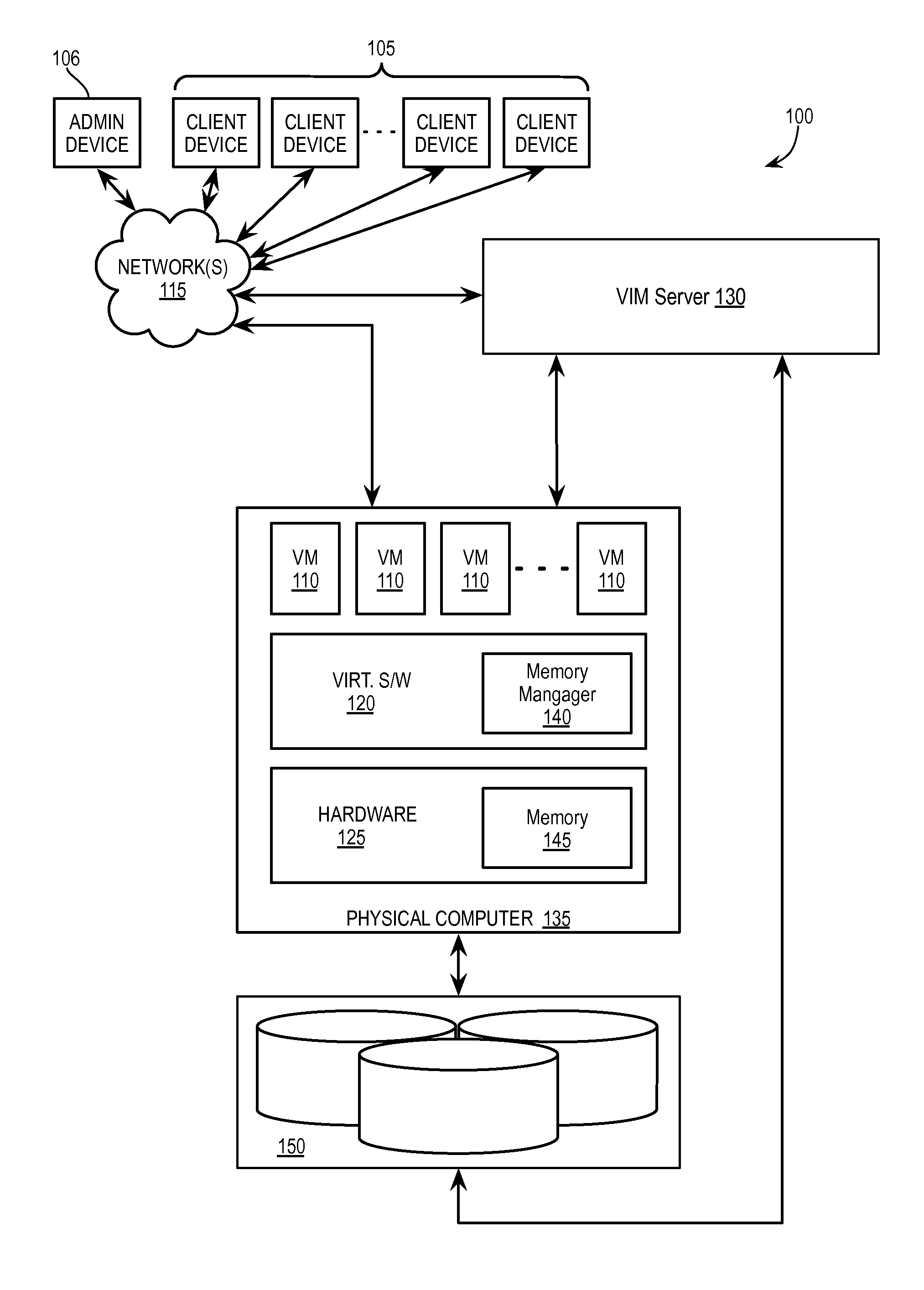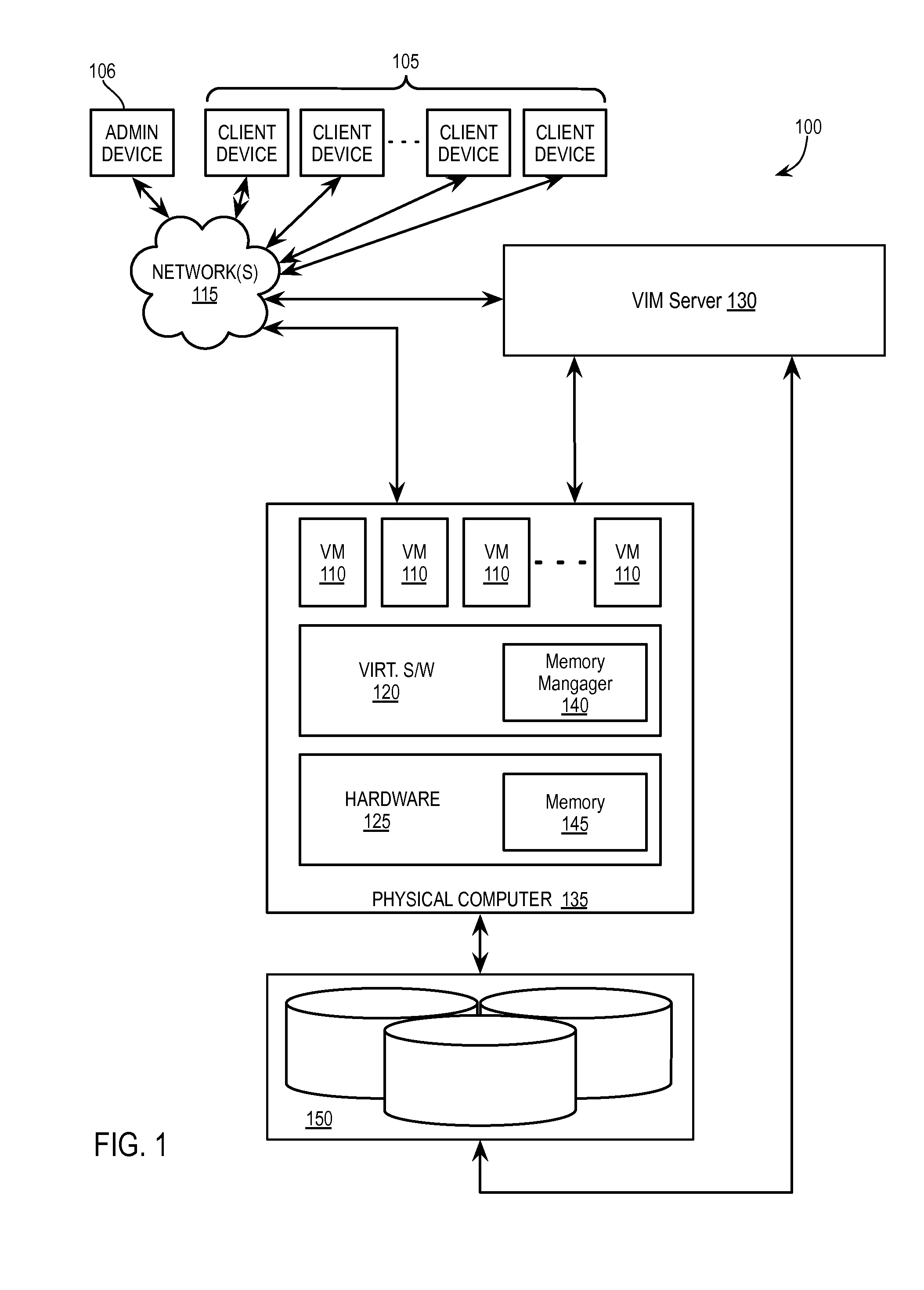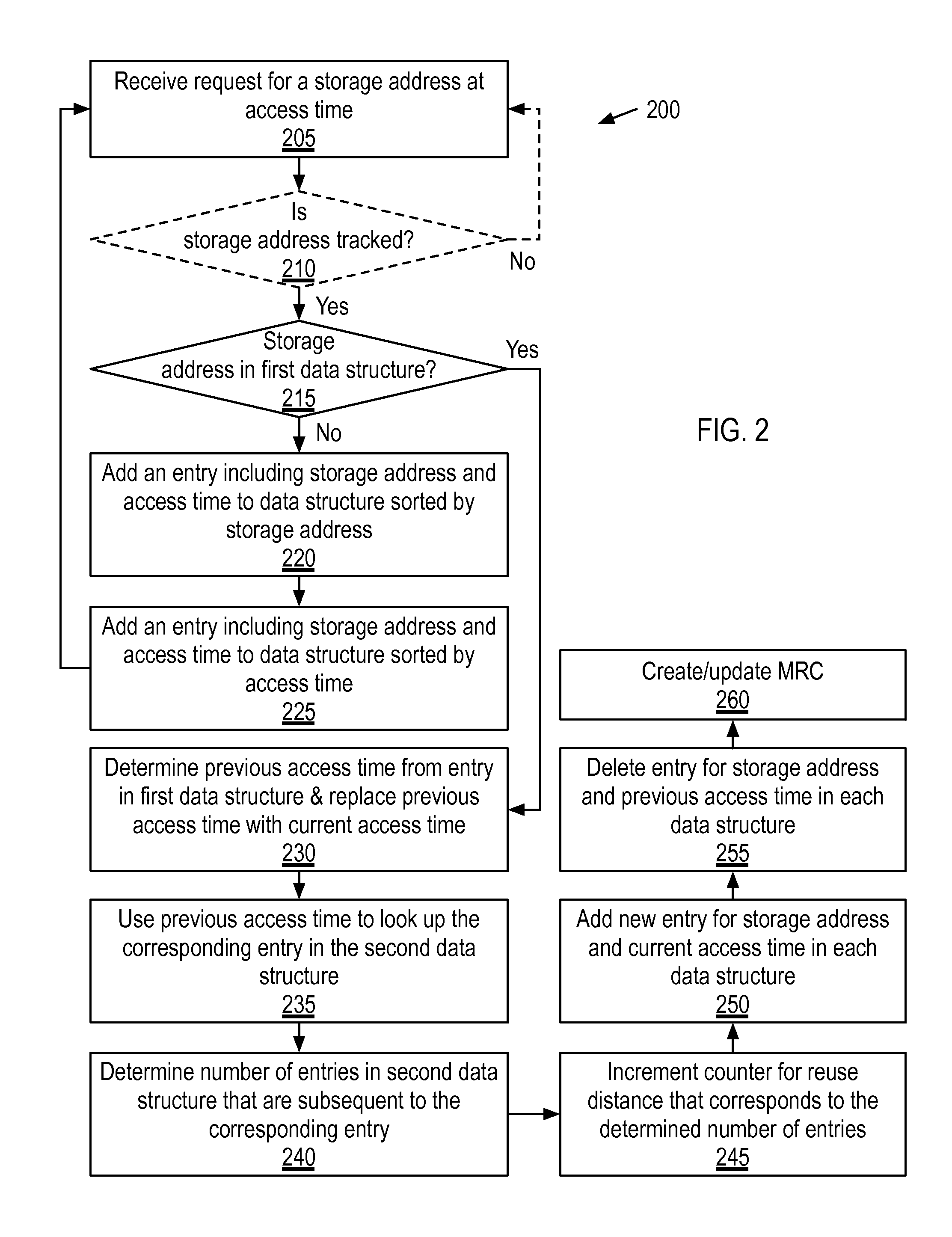Data reuse tracking and memory allocation management
a data reuse and memory allocation technology, applied in the direction of memory allocation/allocation/relocation, multi-programming arrangements, instruments, etc., can solve the problems of difficult administrator to specify flash allocations, large processing and memory resources consumed by conventional algorithms used to determine data reuse in workloads, and little to no benefi
- Summary
- Abstract
- Description
- Claims
- Application Information
AI Technical Summary
Benefits of technology
Problems solved by technology
Method used
Image
Examples
Embodiment Construction
[0012]Embodiments described herein track data reuse patterns for virtual machine workloads. Using a pair of sorted data structures, a memory manager is able to efficiently track the data reuse patterns. As a result, the memory manager is able to quickly estimate a miss-rate curve for each workload during runtime. Additionally, using the miss-rate curves, the memory manager is able to dynamically tune the allocation of memory. For example, the memory manager may allocate additional memory to the workloads that will benefit the most at a given point in time.
[0013]FIG. 1 illustrates, in block diagram form, an exemplary virtual datacenter environment 100 including one or more networked processing devices to track data reuse and manage the allocation of memory to a plurality of workloads. While embodiments are described herein with reference to server-based computing in a virtual datacenter environment, the embodiments of tracking data reuse patterns and allocating memory may be implemen...
PUM
 Login to View More
Login to View More Abstract
Description
Claims
Application Information
 Login to View More
Login to View More - R&D
- Intellectual Property
- Life Sciences
- Materials
- Tech Scout
- Unparalleled Data Quality
- Higher Quality Content
- 60% Fewer Hallucinations
Browse by: Latest US Patents, China's latest patents, Technical Efficacy Thesaurus, Application Domain, Technology Topic, Popular Technical Reports.
© 2025 PatSnap. All rights reserved.Legal|Privacy policy|Modern Slavery Act Transparency Statement|Sitemap|About US| Contact US: help@patsnap.com



